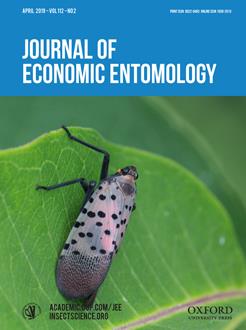The majority of wood-boring ambrosia beetles are strongly attracted to ethanol, a behavior which could be exploited for management within ornamental nurseries. A series of experiments was conducted to determine if ethanol-based interception techniques could reduce ambrosia beetle pest pressure. In two experiments, trap trees injected with a high dose of ethanol were positioned either adjacent or 10–15 m from trees injected with a low dose of ethanol (simulating a mildly stressed tree) to determine if the high-dose trap trees could draw beetle attacks away from immediately adjacent stressed nursery trees. The high-ethanol-dose trees sustained considerably higher attacks than the low-dose trees; however, distance between the low- and high-dose trees did not significantly alter attack rates on the low-dose trees. In a third experiment, 60-m length trap lines with varying densities of ethanol-baited traps were deployed along a forest edge to determine if immigrating beetles could be intercepted before reaching sentinel traps or artificially stressed sentinel trees located 10 m further in-field. Intercept trap densities of 2 or 4 traps per trap line were associated with fewer attacks on sentinel trees compared to no traps, but 7 or 13 traps had no impact. None of the tested intercept trap densities resulted in significantly fewer beetles reaching the sentinel traps. The evaluated ethanol-based interception techniques showed limited promise for reducing ambrosia beetle pressure on nursery trees. An interception effect might be enhanced by applying a repellent compound to nursery trees in a push–pull strategy.
How to translate text using browser tools
10 January 2019
Trap Tree and Interception Trap Techniques for Management of Ambrosia Beetles (Coleoptera: Curculionidae: Scolytinae) in Nursery Production
Karla M. Addesso,
Jason B. Oliver,
Nadeer Youssef,
Paul A. O'Neal,
Christopher M. Ranger,
Michael Reding,
Peter B. Schultz,
Christopher T. Werle
ACCESS THE FULL ARTICLE
It is not available for individual sale.
This article is only available to subscribers.
It is not available for individual sale.
It is not available for individual sale.

Journal of Economic Entomology
Vol. 112 • No. 2
April 2019
Vol. 112 • No. 2
April 2019
Cnestus mutilatus
mass trapping
trap crop
Xylosandrus crassiusculus
Xylosandrus germanus




